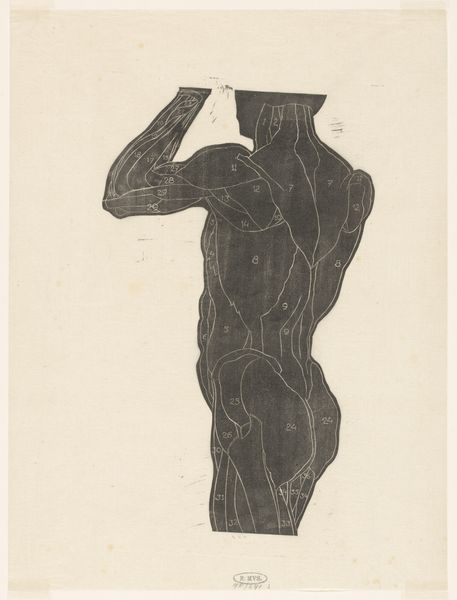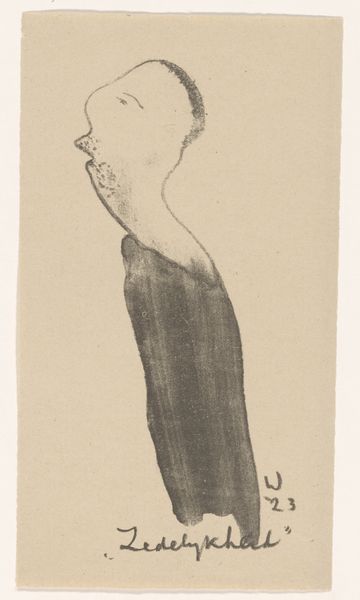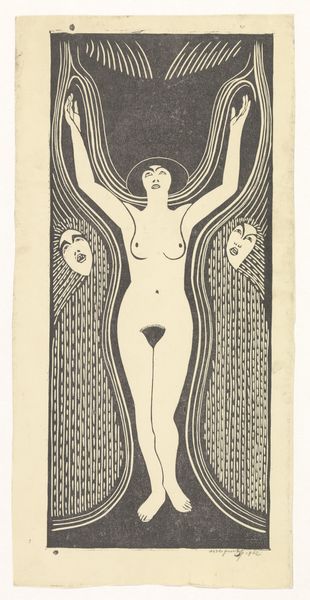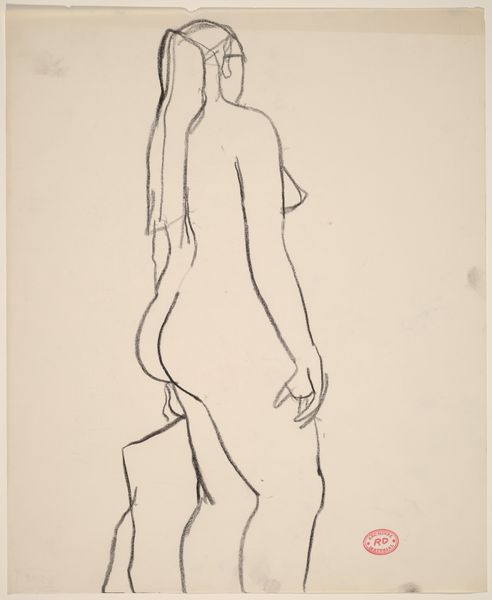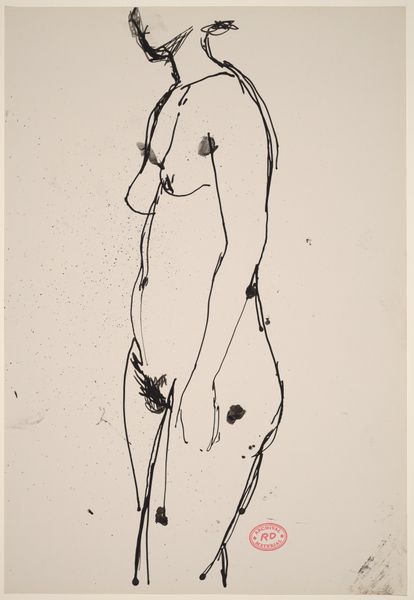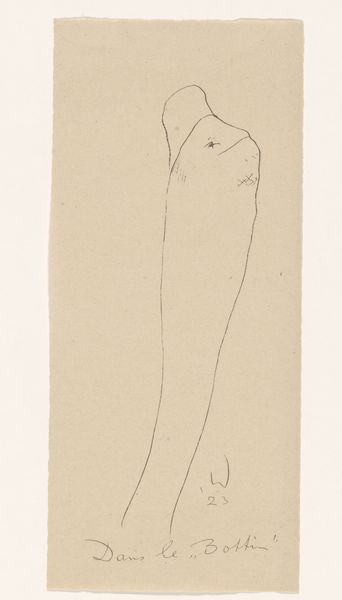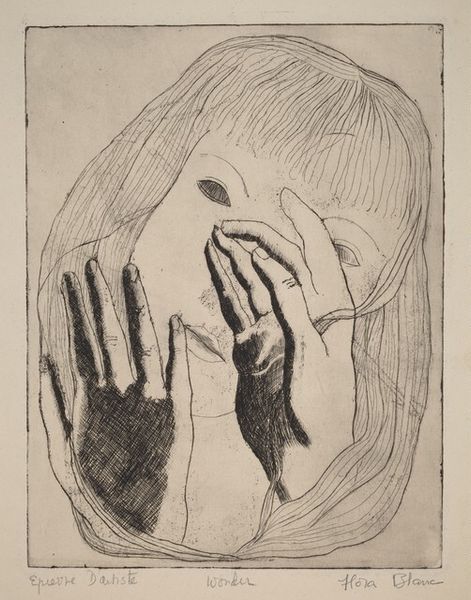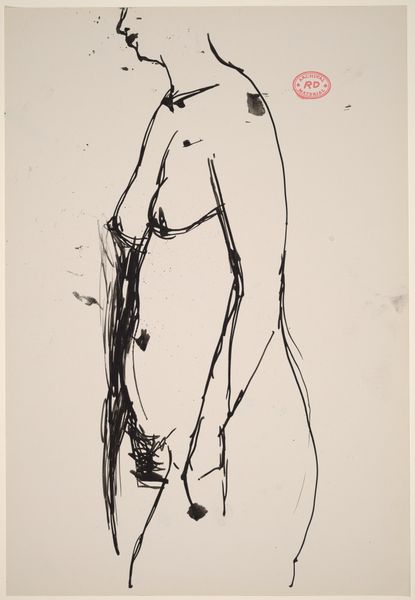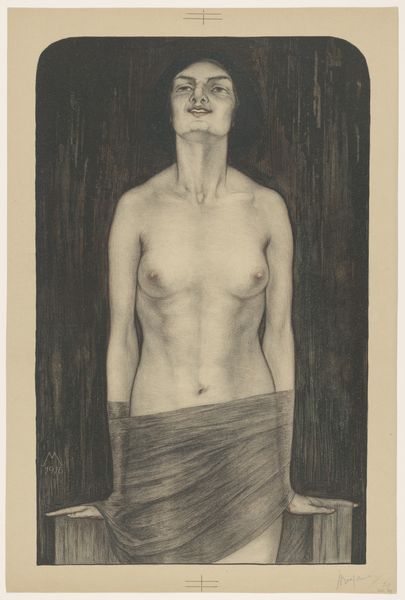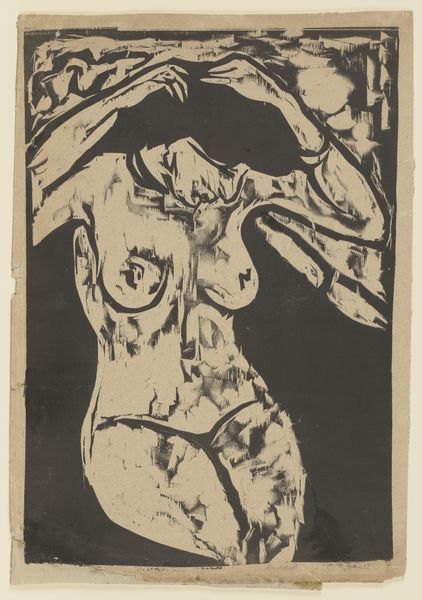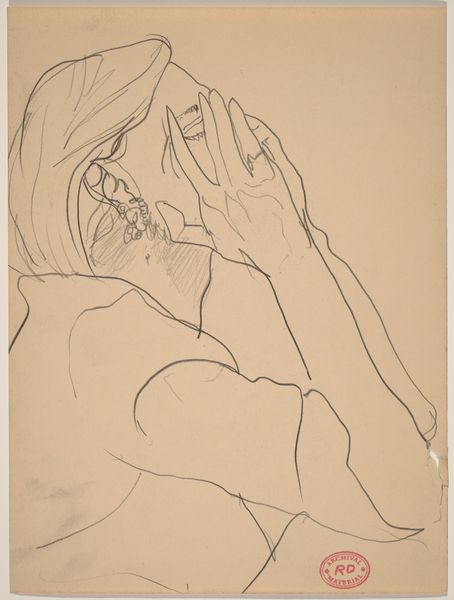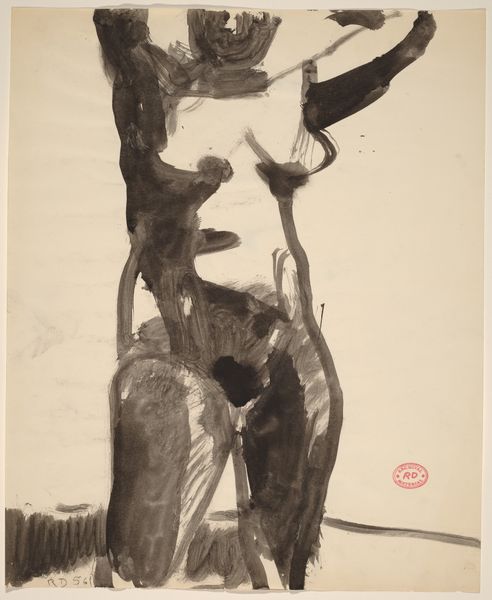
drawing, print, textile, woodcut
#
drawing
#
toned paper
#
blue ink drawing
# print
#
textile
#
figuration
#
expressionism
#
woodcut
#
symbolism
#
monochrome
Dimensions: height 580 mm, width 253 mm
Copyright: Rijks Museum: Open Domain
Curator: It feels...stark. So much weight, even in the stark monochrome. What am I looking at, exactly? Editor: This is "Des onschulds dood," or "The Death of Innocence," a woodcut made in 1913 by Samuel Jessurun de Mesquita. It's part of the Rijksmuseum collection. Curator: A dove, crucified. Well, that's not subtle, is it? The rough texture of the woodcut makes it even more brutal somehow. Like he carved the grief directly into the block. Editor: The symbolism is potent, of course. The dove as a symbol of peace and innocence, contrasted with the violence of the crucifixion. It’s almost too direct, too obvious, but perhaps that’s the point. Curator: It almost looks like it has its little birdy hands clasped together. So yeah, this totally drips of Symbolism—a blunt instrument in this case. There is Expressionism here too—in the sort of raw energy you mentioned, of the artist working. Editor: I see your point, there's something raw and direct that connects it with Expressionist prints that were exploding out of Germany around the same time. Technically, it's interesting— the contrasting use of line; very tight parallel lines for the cross which gives the object form. But very graphic blocks for everything surrounding the white bird. The composition makes the dove leap out in 3D from the background and ground on which it is suspended. Curator: Do you think it's successful though? Does it actually *move* you, or just intellectually bludgeon you? For me, it’s...trying too hard. The emotion feels manufactured. It doesn’t fly with me. No pun intended, by the way. Editor: It's interesting that you say that. For me, the intensity borders on disturbing. I do find myself moved. But I acknowledge the sentiment could come off a little overwrought for some, as it is clear de Mesquita was clearly exploring the darker facets of the human condition. The First World War was brewing then, and his later life was tragic. Curator: So, it sounds as though this bleak premonition manifested into a dark destiny. All said, I feel its clumsy but emotionally intense depiction of mortality still resonates. Editor: Yes. For me, the lasting effect is the unsettling combination of starkness and the raw, immediate texture achieved through the woodcut medium. A definite echo of turbulent times.
Comments
No comments
Be the first to comment and join the conversation on the ultimate creative platform.
